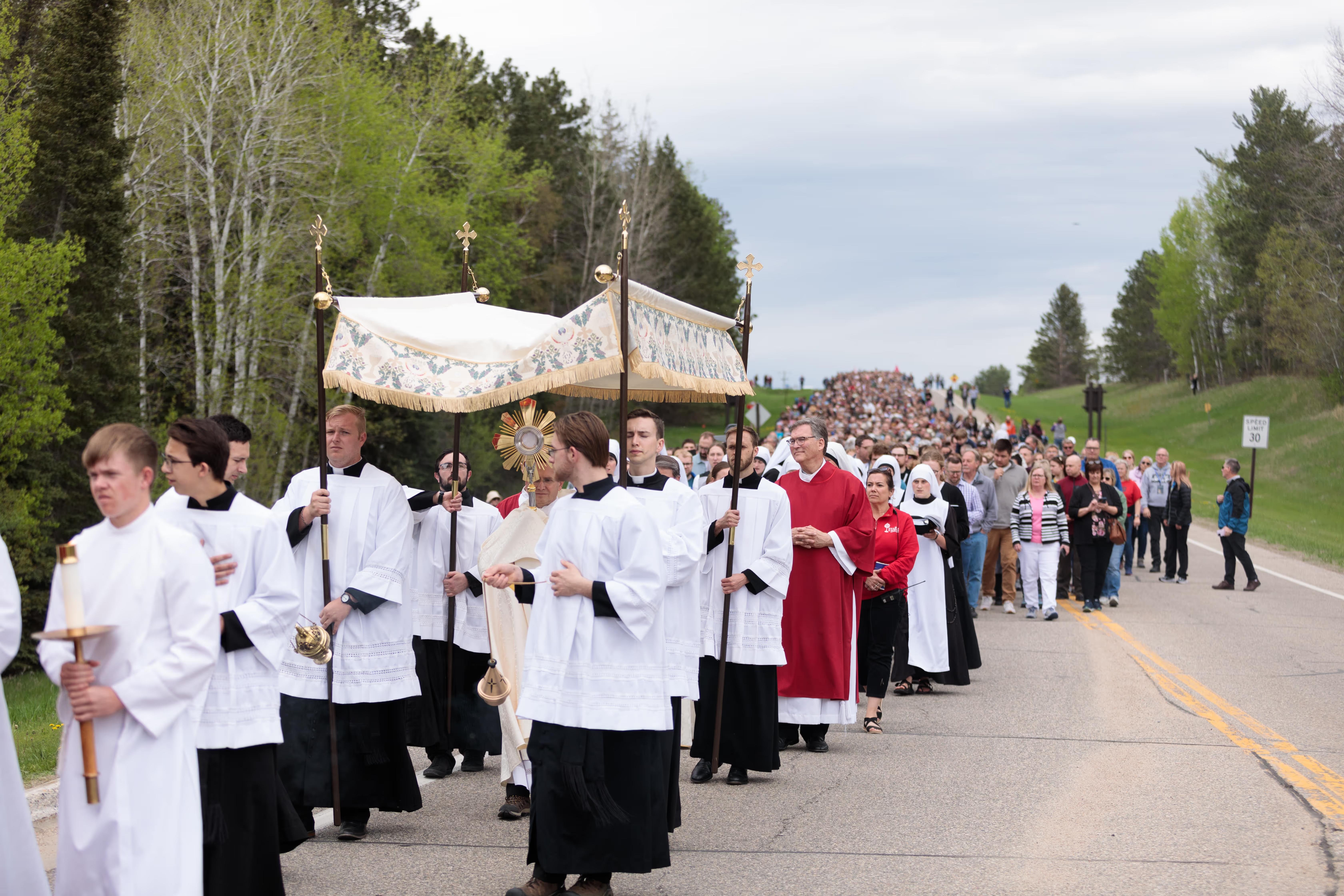
Isn’t it true that great things often have small beginnings? Like the mighty Mississippi which begins as a small stream—only 18 feet across—flowing gently from Lake Itasca in Northern Minnesota over 2,000 miles toward the Gulf of Mexico. And like the National Eucharistic Pilgrimage which launched on Pentecost! Through the power of the Holy Spirit, pilgrims took their first steps on a journey that will trace a cross over our land and which, after 6,500 miles of prayer and witness, will converge on Indianapolis for the Eucharistic Congress in July.
It is a historic moment, and not just because of the length of the pilgrimage. It is the reason for this collective act of belief in the presence and power of Jesus to change history that is breathing new life into our faith. As Archbishop Cordileone stated in a homily before leading 3,000–4,000 pilgrims across the Golden Gate Bridge, Jesus’ way of love “has the power to change history, to change hearts, to bring the life of heaven to earth and to bring us to the life of heaven when we pass from this world to the next.”

In full vestments, Bishop Andrew H. Cozzens stood among the pines at Lake Itasca to launch the Marian Route from Minnesota. He held high the Eucharist in a monstrance as he blessed the pilgrims at the beginning of their journey with Jesus. Bishop Cozzens reminded all gathered: “The revival has to begin with you and me, and has to begin with our repentance, humbling ourselves, turning from our sin.... That’s when the power of the Holy Spirit will be able to inhabit our hearts... so that [you and] I can be the saint[s] that he’s calling [us] to be.”
Natalie Garza, a high school theology teacher in Kansas City and a pilgrim on the St. Elizabeth Ann Seton Route, will be accompanying the Eucharist for the next 60 days. She looks forward to living “a real expression and experience of discipleship.” She is eager, as she says, “to witness with my body the truth that I have professed with my words many times, that Jesus Christ is really present in the Eucharist.”

Pilgrimages are this living of the faith publicly. It isn’t timid. It isn’t hidden. It’s not kept in secret. It is visibly displayed. In his homily, Archbishop Cordileone compared it to the recently beatified Ulma family—a mother, father and their seven children—who were martyred in Poland by the Nazis for sheltering Jews. “Today, we publicly display our faith,” he said as they began their procession to the Golden Gate Bridge. “We will take it to the streets with our Lord in the Blessed Sacrament. Eventually, all the way to Indianapolis for the National Eucharistic Congress in two months.”
All who join the Eucharistic pilgrimage, even if just for a few miles, have the opportunity to receive what every pilgrim has discovered. Archbishop Cordileone put it this way: “Christ breathes new life into us, his church.” Archbishop Christopher Coyne of Hartford, Connecticut, who presided over the launching of the Seton Route, had another way of expressing it: “Our life as Christians is a pilgrimage along the path of salvation. But it is not a solitary one. It is one in which we walk together as the Body of Christ. In seeking after what God desires of us, we become pilgrims of no path but the one that he would have us follow.”

More than a journey from one place to another, he added, a pilgrimage is about coming home. “It allows one to turn to God, to tend to what is most important to life.”
The southern route is named after St. Juan Diego Cuauhtlatoatzin, a 16th-century Indigenous Catholic saint. He was instrumental in transforming the history of Mexico by sharing the message and image of Our Lady of Guadalupe, Patroness of the Americas, and he had a profound devotion to the Eucharist. Every day, he walked 15 miles to go to Mass, in a kind of pilgrimage toward the Lord.
“As we celebrate this great Pentecost Sunday, we ask the Spirit to enable us to give that witness as we go out, not only from this cathedral church, but to the world,” said Brownsville’s Bishop Daniel E. Flores during the May 19 Mass celebrated in English and Spanish, launching the Pilgrimage.
Find out how to join the National Eucharistic Pilgrimage.